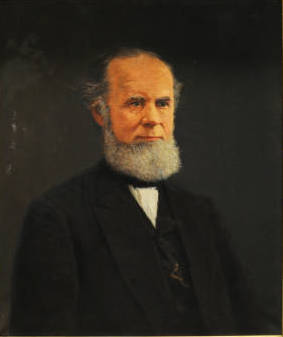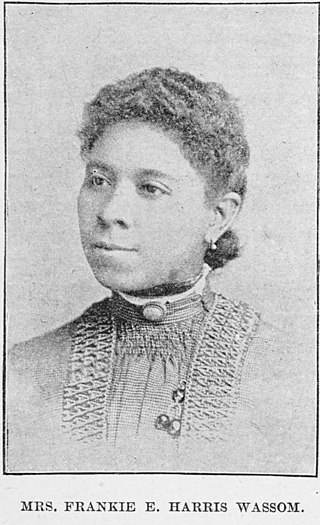
Oberlin College is a private liberal arts college and conservatory of music in Oberlin, Ohio, United States. Founded in 1833, it is the oldest coeducational liberal arts college in the United States and the second-oldest continuously operating coeducational institute of higher learning in the world. The Oberlin Conservatory of Music is the oldest continuously operating conservatory in the United States. In 1835, Oberlin became one of the first colleges in the United States to admit African Americans, and in 1837, the first to admit women. It has been known since its founding for progressive student activism.

Berea College is a private liberal arts work college in Berea, Kentucky. Founded in 1855, Berea College was the first college in the Southern United States to be coeducational and racially integrated. It was integrated from as early as 1866 until 1904, and again after 1954.

Mixed-sex education, also known as mixed-gender education, co-education, or coeducation, is a system of education where males and females are educated together. Whereas single-sex education was more common up to the 19th century, mixed-sex education has since become standard in many cultures, particularly in western countries. Single-sex education remains prevalent in many Muslim countries. The relative merits of both systems have been the subject of debate.

Lane Seminary, sometimes called Cincinnati Lane Seminary, and later renamed Lane Theological Seminary, was a Presbyterian theological college that operated from 1829 to 1932 in Walnut Hills, Ohio, today a neighborhood in Cincinnati. Its campus was bounded by today's Gilbert, Yale, Park, and Chapel Streets.

Mary Edmonia Lewis, also known as "Wildfire", was an American sculptor.

Anna Julia Cooper was an American author, educator, sociologist, speaker, Black liberation activist, Black feminist leader, and one of the most prominent African-American scholars in United States history.

Edward Henry Fairchild (1815–1889) was an American educator and abolitionist. He served as principal of Oberlin Academy and as president of Berea College.

Mary Jane Patterson was the first African-American woman to receive a B.A degree, in 1862.

The Oberlin Conservatory of Music is a private music conservatory of Oberlin College, a private liberal arts college in Oberlin, Ohio. It was founded in 1865 and is the second oldest conservatory and oldest continually operating conservatory in the United States. It is one of the few American conservatories to be completely attached to a liberal arts college, allowing students the opportunity to pursue degrees in both music and a traditional liberal arts subject via a five-year double-degree program. Like the rest of Oberlin College, the student body of the conservatory is almost exclusively undergraduate.

Rev. John Keep was a trustee of Oberlin College from 1834 to 1870. Keep and William Dawes toured England in 1839 and 1840 gathering funds for Oberlin College in Ohio. They both attended the 1840 anti-slavery convention in London.

The Oneida Institute was a short-lived (1827–1843) but highly influential school that was a national leader in the emerging abolitionist movement. It was the most radical school in the country, the first at which black men were just as welcome as whites. "Oneida was the seed of Lane Seminary, Western Reserve College, Oberlin and Knox colleges."
The history of higher education in the United States begins in 1636 and continues to the present time. American higher education is known throughout the world for its dramatic expansion. It was also heavily influenced by British models in the colonial era, and German models in the 19th century. The American model includes private schools, mostly founded by religious denominations, as well as universities run by state governments, and a few military academies that are run by the national government.

Nathan Benjamin Young was an American educator who helped advance black education in the early 20th century. Born a slave in Alabama, Young later became an educator after Booker T. Washington, who witnessed Young’s skills in debating, invited him to teach at the Tuskegee Institute. Following his career as a teacher, Young later became a president of two major universities, Florida A&M University and Lincoln University. He and Henry Lee De Forest, the president of Talladega College, started a campaign to help improve education for the African American community.

Frankie E. Harris Wassom (1850-1933) was an American writer and educator.
A manual labor college was a type of school in the United States, primarily between 1825 and 1860, in which work, usually agricultural or mechanical, supplemented academic activity.

The Union Literary Institute, located in rural Randolph County, Indiana, at 8605 East County Road 600 South, Union City, Indiana, was a historic school founded in 1846 primarily for blacks by abolitionist Quakers and free blacks in three local communities. Only white students were allowed to attend the public schools in the state. The term "literary institute" at the time meant a non-religious school.
James Bradley was an African slave in the United States who purchased his freedom and became an anti-slavery activist in Ohio.

Frances Walker-Slocum was an American educator, pianist, and organist, and the first tenured African-American female professor at the Oberlin Conservatory of Music, the first conservatory in the United States to admit black students.
Eber Carle Perrow (1880–1968) was an American professor of English who wrote about the literary history of the last will and testament and southern folk songs. His writings on folk songs were influential.
History of education in the Southern United States covers the institutions, ideas and leaders of schools and education in the Southern states from colonial times to about the year 2000. It covers all the states and the main gender, racial and ethnic groups.

















